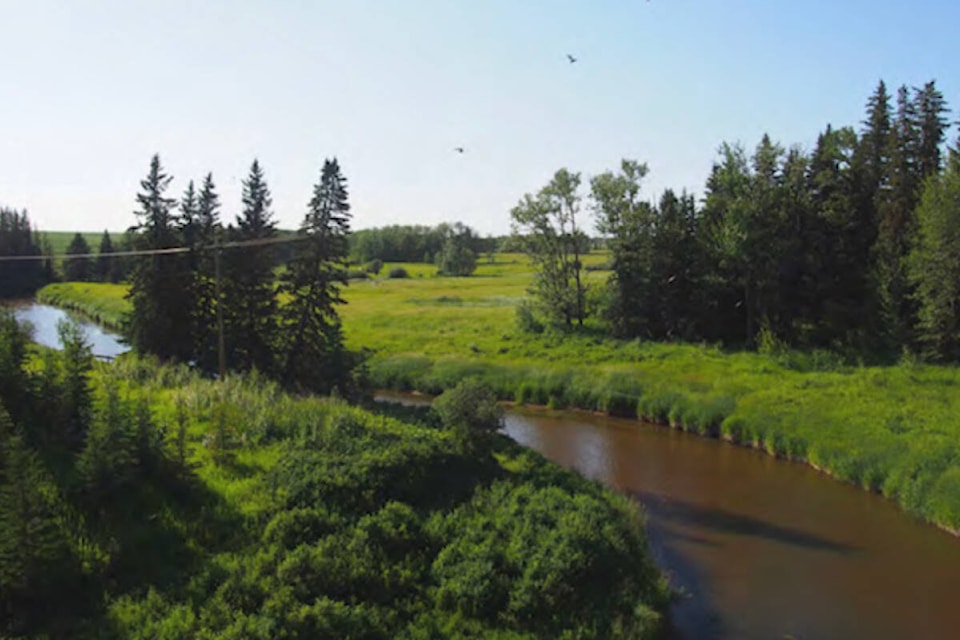Water sampling results for Medicine River show it is generally in good health, but more testing is planned.
Three locations along the river were tested 15 times between May and November in 2023. Water temperature, turbidity (cloudiness), dissolved oxygen, ammonia, phosphorous, pH and chloride were all tested as part of a joint effort involving Medicine River Watershed Society (MRWS) and Red Deer River Watershed Alliance (RDWA).
Testing revealed that the “river and its tributaries generally met acceptable ranges and are considered in good health,” said Darian Coulter, RDWA watershed outreach and project co-ordinator and who undertook the testing.
“However, occasional findings of high nutrient concentrations (phosphorous and nitrogen) and low dissolved oxygen levels suggest a need for continued monitoring, particularly after rainfall events.”
Testing was done north of Eckville at the Rainy Creek bridge, at a creek south of Eckville and near Spruce View at the confluence of the Red Deer and Medicine Rivers.
Coulter recommended monthly testing and additional assessments following rainfalls and that laboratory testing be used to get more precise measurements.
Those recommendations were followed through on by the partnership which is backing another season of testing set to begin soon.
“The primary objective remains to assess the current state of the Medicine River and its tributaries, aiming to determine whether there have been improvements over time,” said Coulter.
MRWS board member Dana Kreil said the latest results showed there has been significant improvement since 2007 testing indicated a river in trouble.
“It was in bad shape. It failed everything,” said Kreil, who is a Lacombe County councillor.
“We are finding it is improving. There was a little bit of a dissolved oxygen issue last year so we’re going to continue our sampling efforts in 2024 and see if we can drill down into that a little bit.”
“We have Prussian carp in there and they managed to live but we just want to make sure all fish can live in there.”
Prussian carp are an invasive species and not a welcome addition to the river where they can out-compete native fish species for food. They have also been found in a number of other Alberta rivers, including the Red Deer River.
Kreil said this year it is hoped to begin testing during the spring runoff, which was missed last year.
Ponoka County and TransCanada Pipelines have already offered financial help and other industry partners are also being pursued.
One of the questions it was hoped testing would answer was what is contributing to the river’s distinctive brown colour.
Kreil said water samples came up clear. It is believed the colour can be traced to the river’s extremely slow flow rate.
“The gradient of the river is so slight it could almost be deemed a long lake. Because of that it doesn’t flush very often except at high rain events or during the spring runoff so the bottom is brown.”
